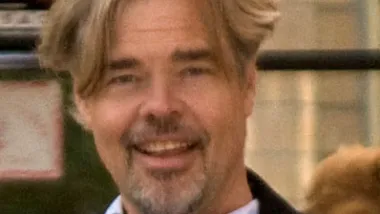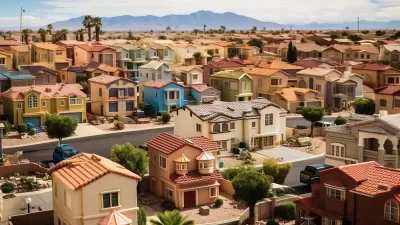Last year Project on Public Spaces and I published the Great Neighborhood Book, which offers hundreds of ideas from around the world about making community improvements on issues ranging from crime prevention to environmental restoration. Since then almost everyone I meet asks: What's your favorite neighborhood? I should have an answer ready. But each time the question arises, my mind starts wandering through the great places I've explored through the years. Is it the Plateau neighborhood in Montreal, where I became infatuated with cities years ago as a college student? Maybe
which offers hundreds of ideas from around the world about making
community improvements on issues ranging from crime prevention to
environmental restoration. Since then almost everyone I meet asks:
What's your favorite neighborhood?
I should have an answer ready. But each time the question arises,
my mind starts wandering through the great places I've explored through
the years. Is it the Plateau neighborhood in Montreal, where I became
infatuated with cities years ago as a college student? Maybe
Trastevere, the old bohemian quarter of Rome my wife Julie and I
visited as newlyweds? Or what about Harter Heights, which I enjoyed
strolling through recently on a trip to South Bend, Indiana?
To settle the matter once and for all, I wrote up a list of all the
wonderful corners of the urban world I've had the pleasure of visiting.
Then, with great deliberation, I began to cross off names until only
Jacobsburg remained. It is, in my opinion, is the finest neighborhood
in America. To keep the suspense going, I will let you figure out the
surprising city where Jacobsburg is located. But here are the things I
love about it.
Jacobsburg grew up slowly in a variety of architectural styles
between 1890, when streetcars first reached this wooded spot along the
river, and 1920, when the boom in automobile sales opened up distant
suburban tracts for development. Buses now ply streets where rails once
ran, but the corner business districts that popped up to serve trolley
riders are still the heart of the community. Butcher shops and
haberdasheries, however, have now given way to ethnic eateries and
vintage clothing shops.
One of the traits I most admire about Jacobsburg is a knack for
being quaintly old-fashioned and au courant cosmopolitan at the same
time. At one of my favorite streetcorners in the world, 19th St. and
Holly Avenue, a delicatessen run by an old guy named Rocco and his son
Gus looks out across the intersection at a high-fashion coffeeshop with
fair trade beans from 14 countries and the best selection of design
magazines this side of Tokyo. On the other two corners sit the
Mogadishu Star, a Somali restaurant, and Krazy Kat Komics, a used and
rare comic book store. Within a few steps you'll come across a
Reconstructionist synagogue, the largest fan belt dealer in the state,
a Carnegie library, a Caribbean seafood restaurant once written up in
Food + Wine magazine and a laundromat made famous in an R&B song.
Years ago, the neighborhood was an Eastern European enclave with a
sprinkling of Jamaicans who first came to the area as farm laborers
during World War II. Today it is a veritable United Nations, thanks in
part to the nearby college whose diverse student body keeps the streets
lively all day and most of the night.
What do I like most about Jacobsburg? Well, I could mention
plentiful trees shading the sidewalks or the pleasing sequence of
three-and four-story buildings with front stoops where people sit out
to socialize on warm evenings. Then there's the newly refurbished
Riverwood park (which everyone says was designed by Frederick Law
Olmsted, but wasn't) with a swan pond, skateboard ramps, a weekend
farmers' market, summer band concerts and a café with better pastry
than you'll find in Copenhagen.
And how could I ignore the invincible spirit of neighborliness,
apparent even to a casual visitor? Current residents explain that the
neighborhood set aside its own ethnic tensions in the 1960s and came
together to fight a freeway that would have essentially leveled the
place. That sense of civic engagement endures to this day. The local
business association sponsors an annual Spring Festival with a 30-foot
maypole in the playground of St. Stanislaus School. Meanwhile a VFW
Post, a commedia dell'Arte theatre troupe, a Baptist congregation, a
Mexican motorcycle club and a gay men's chorus are among the dozens of
local organizations that collaborate to raise money for the
neighborhood food shelf.
But if forced to name one thing that makes this neighborhood so
great, I would have to say it's the streets. That sounds prosaic, I
know-how can mere asphalt compete with Rocco's famous Ukrainian sausage
or the boysenberry-fig Danish at the Parkview Café? Please let me
explain.
The streets of Jacobsburg-thanks to far-sighted urban planning at
the turn of the 20th century and lots of vigilant neighborhood activism
ever since-are places for people more than conduits for cars. From my
first visit in the early 1990s, I remember being amazed at how
liberating it felt walking the streets in a place where pedestrians
take priority over automobiles.
Nineteenth Street, like busy streets all around the country, was
widened in the 1970s. But after two kids were killed by speeding cars
on successive Saturdays, the neighborhood rose up demanding that the
road be scaled back to two lanes. It took twelve years, but City Hall
finally agreed and the whole area soon blossomed into a favorite
destination for visitors from all over town. They come to browse shops,
dine in restaurants, drink beer, tour art galleries, see shows at the
clubs, but most of all to simply be part of the crowd strolling up and
down the sidewalks.
This popularity means the streets carry a lot of traffic in both
cars and buses, but not at the expense of pedestrians. Careful
attention has been paid to make walking a pleasurable activity. The
sidewalks are wide enough to function almost as town squares, so you'll
find sidewalk cafes, whimsical sculpture, flower patches, buskers and
plenty of benches to sit down for a conversation.
Parking is scarce but that's not been a deterrent to ever-growing
economic vitality. Residents generally walk or bike around the
neighborhood, and motorists are willing to park some distance away
since the side streets are both safe and interesting, thanks to the
heavy foot traffic. A new transit line connecting Jacobsburg to the
university and downtown has become the preferred way for many folks to
arrive. Bike trails proliferating across the city are also helping
lighten the traffic load.
One last thing I want to mention about Jacobsburg is the wealth of
great pubs, which live up to an older sense of the word -- meaning
"public house" -- rather than the current definition as "a place to
drink." Families encompassing three generations can be found in the
booths at corner taverns like The White Eagle or Syl & Mary's
eating supper right alongside laborers celebrating quitting time and
students commemorating the end of another day of classes. The great
majority of these pubs share a virtue that English novelist George
Orwell described as "quiet enough to talk," in a 1946 essay about his
favorite London pub, The Moon Under Water.
But The Moon Under the Water existed only in Orwell's imagination, a
composite of the qualities he found in pubs across England. And the
same is true of Jacobsburg, a neighborhood that I dreamed up out of
wonderful experiences I've had on the streets of many American cities.
I named it after urbanist visionary Jane Jacobs. Holly Avenue honors
William H. (Holly) Whyte, the far-sighted champion of public spaces
whose work inspired Project for Public Spaces. The photo you see is
actually Chapel Street in New Haven, Connecticut, which was 95 percent
abandoned in the 1980s but sprang back to life after developer Joel
Schiavone convinced the city to undo an earlier street widening.
But rather than being uselessly Utopian, I see Jacobsburg as the
future that's possible for neighborhoods everywhere as people work to
create great streets and public spaces in our communities.

Maui's Vacation Rental Debate Turns Ugly
Verbal attacks, misinformation campaigns and fistfights plague a high-stakes debate to convert thousands of vacation rentals into long-term housing.

Planetizen Federal Action Tracker
A weekly monitor of how Trump’s orders and actions are impacting planners and planning in America.

San Francisco Suspends Traffic Calming Amidst Record Deaths
Citing “a challenging fiscal landscape,” the city will cease the program on the heels of 42 traffic deaths, including 24 pedestrians.

Half of Post-Fire Altadena Home Sales Were to Corporations
Large investors are quietly buying up dozens of properties in Altadena, California, where a devastating wildfire destroyed more than 6,000 homes in January.

Opinion: What San Francisco’s Proposed ‘Family Zoning’ Could Really Mean
Mayor Lurie is using ‘family zoning’ to encourage denser development and upzoning — but could the concept actually foster community and more human-scale public spaces?

Jacksonville Launches First Autonomous Transit Shuttle in US
A fleet of 14 fully autonomous vehicles will serve a 3.5-mile downtown Jacksonville route with 12 stops.
Urban Design for Planners 1: Software Tools
This six-course series explores essential urban design concepts using open source software and equips planners with the tools they need to participate fully in the urban design process.
Planning for Universal Design
Learn the tools for implementing Universal Design in planning regulations.
Gallatin County Department of Planning & Community Development
Heyer Gruel & Associates PA
JM Goldson LLC
City of Camden Redevelopment Agency
City of Astoria
Transportation Research & Education Center (TREC) at Portland State University
Jefferson Parish Government
Camden Redevelopment Agency
City of Claremont






























